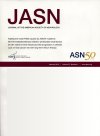Anti Human CX3CR1 VHH Molecule Attenuates Venous Neointimal Hyperplasia of Arteriovenous Fistula in Mouse Model
Fractalkine receptor 1 (CX3CR1) mediates macrophage infiltration and accumulation, causing venous neointimal hyperplasia (VNH)/venous stenosis (VS) in arteriovenous fistula (AVF). The effect of blocking CX3CR1 using an anti–human variable VHH molecule (hCX3CR1 VHH, BI 655088) on VNH/VS was determined using a humanized mouse in which the human CX3CR1 (hCX3CR1) gene was knocked in (KI).
Whole-transcriptomic RNA sequencing with bioinformatics analysis was used on human stenotic AVF samples, C57BL/6J, hCX3CR1 KI mice with AVF and CKD, and in in vitro experiments to identify the pathways involved in preventing VNH/VS formation after hCX3CR1 VHH administration.
Accumulation of CX3CR1 and CD68 was significantly increased in stenotic human AVFs. In C57BL/6J mice with AVF, there was increased Cx3cr1, Cx3cl1, Cd68, and Tnf-α gene expression, and increased immunostaining of CX3CR1 and CD68. In hCX3CR1-KI mice treated with hCX3CR1 VHH molecule (KI-A), compared with vehicle controls (KI-V), there was increased lumen vessel area and patency, and decreased neointima in the AVF outflow veins. RNA-seq analysis identified TNF-α and NF-B as potential targets of CX3CR1 inhibition. In KI-A–treated vessels compared with KI-V, there was decreased gene expression of Tnf- α, Mcp-1, and Il-1 β; with reduction of Cx3cl1, NF-B, and Cd68; decreased M1, Ly6C, smooth muscle cells, fibroblast-activated protein, fibronectin, and proliferation; and increased TUNEL and M2 staining. In cell culture, monocytes stimulated with PMA and treated with hCX3CR1 VHH had decreased TNF- α, CD68, proliferation, and migration.
CX3CR1 blockade reduces VNH/VS formation by decreasing proinflammatory cues.



